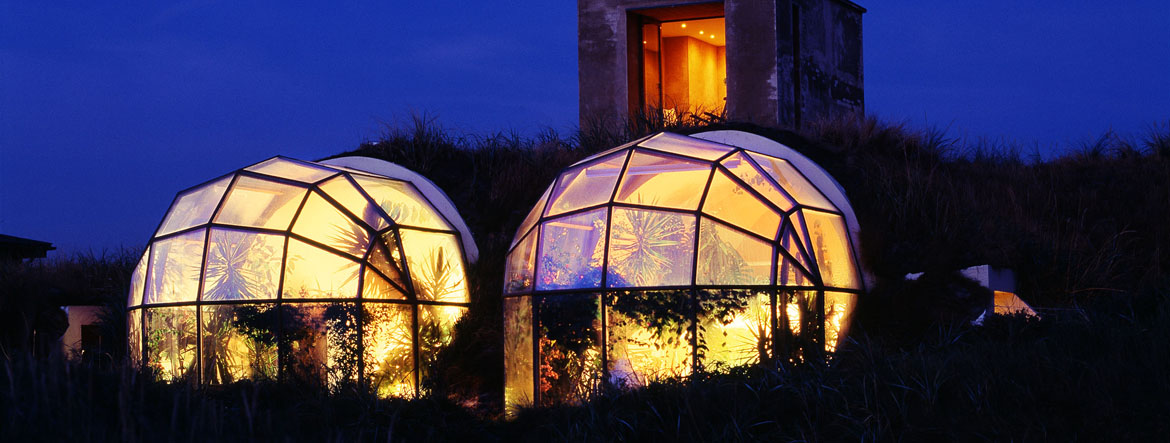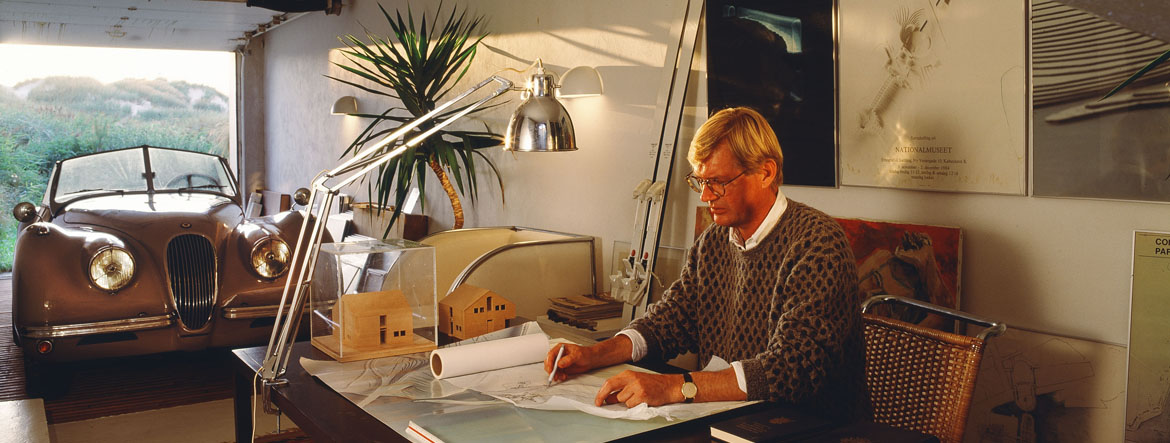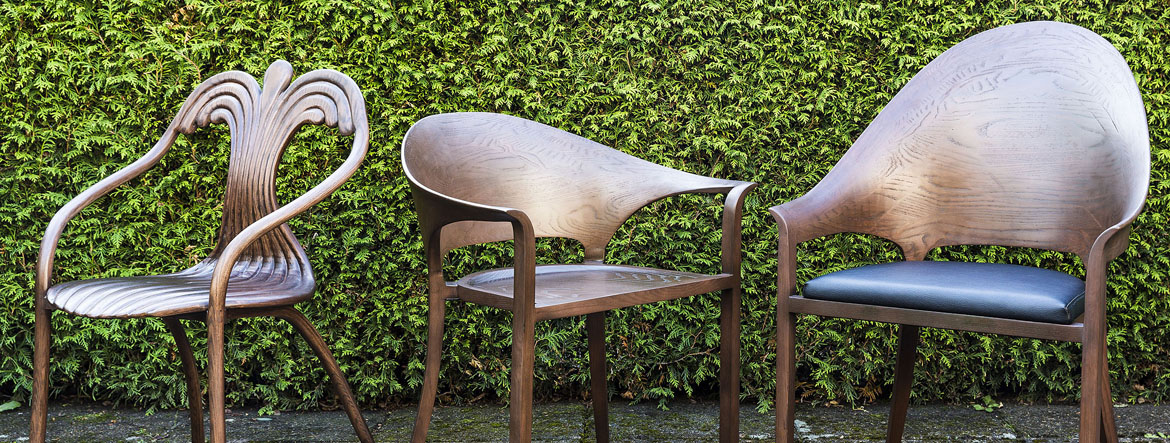Claus Bonderup
Already as a boy Claus was wont to build small houses at his parents’ holiday cottage at Blokhus. Later this self same cottage would become his first actual architectural project in full scale.
He would, of course, transform the structure to avoid it resembling any other house in the dunes.
The house still stands today in a style that endures.
Since that time Bonderup has designed underground nightclubs along the Amazon in Brazil, planned fishing harbours on the Aleutian Islands off Canada’s west coast, catalogued historic buildings in northern Yemen, and secured international fame with his Arctic Centre, which, like a beacon in the Polar night, transforms Rovaniemi in northern Finland into a space utterly unique.
On top of all this, Claus Bonderup has to his credit several outstanding works within Danish architecture.
In Brazil he was attached to Dr Sergio Bernardes’ firm of architects, whose studios were located close by Rio de Janeiro’s infamous Copacabana beach. From here he was dispatched to the country’s former capital, Manaus, in the heart of the Amazon, to design the subterranean detail of a hotel and entertainment centre project the main feature of which was an encapsulating giant glass dome, concealed deep below land and river surfaces.
Here rich American hunting parties could enjoy themselves without suffering mosquitoes, snakes and other natural, if bothersome, rainforest flora and fauna.
This project was so pompously ambitious that it in fact never materialized.
Still, Bonderup had learned to think big and in a design idiom other than his traditional Danish.
His ability to see the bigger picture developed further when he travelled to Switzerland to work with the internationally renowned firm of architects, Florian Vischer & Georges Weber, in Basel, and then later winning first prize in an urban development competition in Bern.
Everywhere he went Claus Bonderup would experience a little of the same greatness he had encountered during his childhood on the North Sea; something of the inherent nature of northern Jutland, to whence he always longed to return.
Perhaps it was this longing that in 1973 prompted him to return to the teacher of his student days, Jacob Blegvad, the Aalborg Inspector of Royal Buildings. Now back home he had a platform by which to convey his architectural ideas around the country, while at the same time cultivating his interest in the essence of the design process itself.
In 1972 Claus Bonderup came across a plot of land behind the dunes on the outskirts of Blokhus which would constitute the beginning of his comprehensive experiments with space, its form and its volume generated by pure geometry.
It was his ‘white period’, a time when everything from walls, furniture and clothing to cars, food and wine was white, so as not to spoil the symbiosis between light and architecture.
He dug his house deep into the dunes, cutting off his view of other houses while making him invisible to his neighbours. Two hemispherical glass prisms protruded like giant fly eyes looking out to sea, simultaneously drawing in the maximum amount of light possible. A design so utterly distinctive that it attracted not alone the attention of his colleagues at home, but fascinated foreign architects as well.
Architects viewed with interest how geometric form was put to the test, and the house in the dunes very swiftly wrote itself into international architectural history.
One fine day he met the colourful Anne Just, for whom he built a house for the ducks she reared in her park-like garden. Designed with a west-facing terrace it adhered rigorously to the rules of the golden section.
But then the ducks gained weight, obviously, and the door soon became too small!
Its architectural design precluded the entrance becoming any larger.
To make a long story very short, the ducks ended up on the dinner table, as Claus and Anne found love and each other.
From this point onwards his white period gradually gives way to colour. And one day, after twenty years in the dunes, the seaside resort which they were forced to look upon on their way to and fro had become so disfigured by concrete structures that the couple decided to move away from the ‘utter ugliness’ of it all.
This was the beginning of the House at Hune, built at the same time as his projects in Rowaniemi, where Bonderup’s Polar Centre led on to other remarkable building designs.
Claus Bonderup has never concealed his firm belief that the classical idiom equates with good architecture; simple, beautiful rooms with inherent flexibility, functional in every changing circumstance.
In the public arena this ideal comes to clear expression in the railway station and allied buildings Bonderup designed in High Tåstrup, just outside Copenhagen.
His sense for detail and quality is legendary be it noteworthy buildings or the design of simple functional everyday objects. His approach to the job at hand testifies to his international orientation.
On graduation Bonderup worked for a period with the Henning Larsen firm of architects in Copenhagen. Afterwards he travelled widely abroad, concentrating in the main on the projects mentioned above – Brazil, Switzerland and Yemen – until joining forces for many years with Jacob Blegvads’ Architects, in Aalborg, as its chief architect.
Today Bonderup heads his own firm in Hune, while holding the position of professor at Aalborg University’s department of architecture and design.
Besides architectural students in northern Jutland, other budding architects at home and abroad have over the years studied under the famed architect from Hune.
Notable among Bonderup’s architectural works that demonstrate his reach and vision are the aforementioned Finnish Arctic Centre and fishing harbours on the Aleutian Islands. To these can be added a palace for a Kuwaitian sheikh, the design of one hundred permanent residences on a Spanish hilltop, a hotel project for Royal Copenhagen in Japan, and a high-rise apartment building in an ancient quarter of Alexandria, in Egypt.
His lengthy catalogue of works includes the restoration of old townhouses for Royal Copenhagen in Singapore. At home in Denmark he has applied his unfailing pure style of architecture to an electricity museum near Lake Tange, a new ferry terminal at Helsingør, and a new town quarter in High Tåstrup with the railway station as its core feature, to name but a few examples.
Claus Bonderup has received a vast array of foreign and Danish honours and awards, among them the prestigious Eckersberg Medal, awarded by the Danish Academy of Fine Arts.
Much of his work is exhibited internationally – notably he is represented at The Museum of Modern Art, in New York (MoMA), and at home at Louisiana in Humlebaek, just outside Copenhagen.
Claus Bonderup is currently a member of the Danish Academy of Fine Arts. He was formerly a member of the Danish Arts Foundation and on the Board of the European Cultural Foundation. In the ten-year period 1986-96 he was a board member at the Charlottenborg Exhibition Centre in Copenhagen, and as such was in part responsible for the major architectural exhibition held there when Copenhagen was selected the European City of Culture, in 1996.
Should he be granted a second life, he says, a good part of it would be spent on even more architecture.
The garden around the House at Hune opened Claus Bonderup’s eyes for plant diversity, providing an appreciation of how to use flowers as significant detail in an architectural whole – an extra dimension that he in a new life would exploit to an even greater extent.
Claus Bonderup, professor, designer and architect MAA, was born in Aalborg in 1943, and he passed away on the 10th May 2022. He graduated from the Royal Academy of Fine Arts in Copenhagen in 1969.
Birthe Lauritsen author of Huset & Haven i Hune
Author and journalist Birthe Lauritsen writes in her Huset & Haven i Hune this vivid portrait of Claus Bonderup, concentrating on his wide ranging and creative life steeped in the world of architecture.




